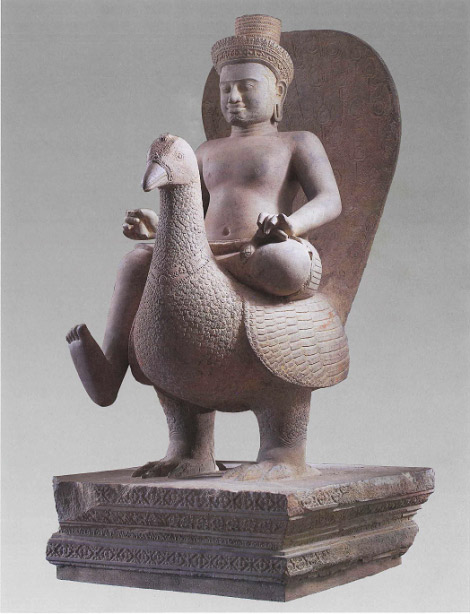
|
|
|
| |
Skanda on a Peacock returns to Cambodia
[July 15, 2021] From 928 to 944 A.D., Koh Ker was the capital of the ancient Khmer empire in Cambodia. The Cambodian state under King Jayavarman IV constructed a vast complex of sacred monuments at Koh Ker, including the Prasat Krachap temple and its statuary. Koh Ker statuary was revolutionary for its time. Many of the statues, including Skanda on a Peacock, were huge, often shown in movement, and were free-standing or in high-relief. Skanda, the Hindu God of war, is rarely depicted in Cambodian art, but appears to have featured prominently in the Prasat Krachap temple complex. Skanda on a Peacock depicts the Hindu god of war, Skanda, riding on the back of a peacock. The body and tail of the peacock are decorated with intricate engraved patterns. Khmer cultural experts believe that the face of the Skanda on the statue may in fact be a portrait of a royal family member, such as Harshavarman II, the son of King Jayavarman IV. Skanda on a Peacock is considered to be a masterpiece of artistic achievement and a valuable part of the Cambodian cultural heritage. Skanda on a Peacock, along with several other significant statues, was stolen from the Prasat Krachap temple at Koh Ker in Cambodia in or about 1997 by a former member of the Khmer Rouge leading a team of looters. The statue was sold by antiquities dealer Douglas Latchford into the international art market. After the most recent owner was contacted by the United States regarding Skanda on a Peacock, the owner agreed to relinquish possession of the statue and to waive all claims of right, title, and interest in it. Courtesy: U.S. Department of Justice
|